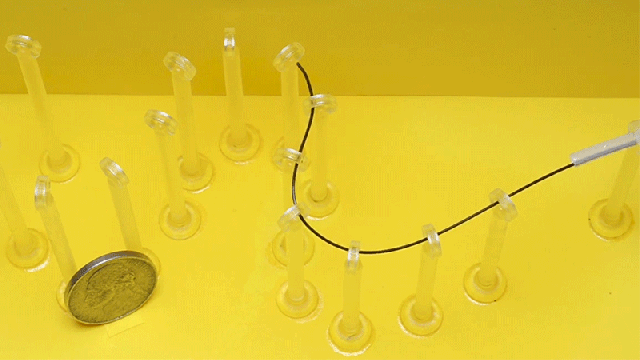Robotics engineers at MIT have built a threadlike robot worm that can be magnetically steered to deftly navigate the extremely narrow and winding arterial pathways of the human brain. One day it could be used to quickly clear blockages and clots that contribute to strokes and aneurysms, while at the same time making the current state of robotic evolution even more unsettling.
Strokes are a leading cause of death and disability, but relieving blood vessel blockages within the first 90 minutes of treatment has been found to dramatically increase survival rates of patients. The process is a complicated one, however, requiring skilled surgeons to manually guide a thin wire through a patient’s arteries up into a damaged brain vessel followed by a catheter that can deliver treatments or simply retrieve a clot.
Not only is there the potential for these wires to damage vessel linings as they inch through the body, but during the process, surgeons are exposed to excess radiation from a fluoroscope which guides them by generating x-ray images in real-time. There’s a lot of room for improvement.
Using their expertise in both water-based biocompatible hydrogels, and the use of magnets to manipulate simple machines, the MIT engineers created a robotic worm featuring a pliable nickel-titanium alloy core with memory shape characteristics so that when bent it returns to its original shape.
The core was then coated in a rubbery paste that was embedded with magnetic particles, which was then wrapped in an outer coating of hydrogels allowing the robotic worm to glide through arteries and blood vessels without any friction that could potentially cause damage.
The robot was tested on a small obstacle course featuring a twisting path of small rings guided by a strong magnet that could be operated at enough distance to be placed outside a patient. The engineers also mocked up a life-size replica of a brain’s blood vessels and found that not only could the robot easily navigate that obstacle but that there was also the potential to upgrade it with additional tools like a delivery mechanism for clot reducing drugs.
They even successfully replaced the worm’s metal core with an optical cable, so that once it reached its destination, it could deliver powerful laser pulses to help remove a blockage.
The robot would not only make the post-stroke procedure faster and faster, but it would also reduce the exposure to radiation that surgeons often have to endure. And while it was tested using a manually operated magnet to steer it, eventually machines could be built to control the position of the magnet (MRI machines already surround patients in intense magnetic fields) with improved accuracy, which would in turn further improve and accelerate the robot’s journey through a patient’s body.
